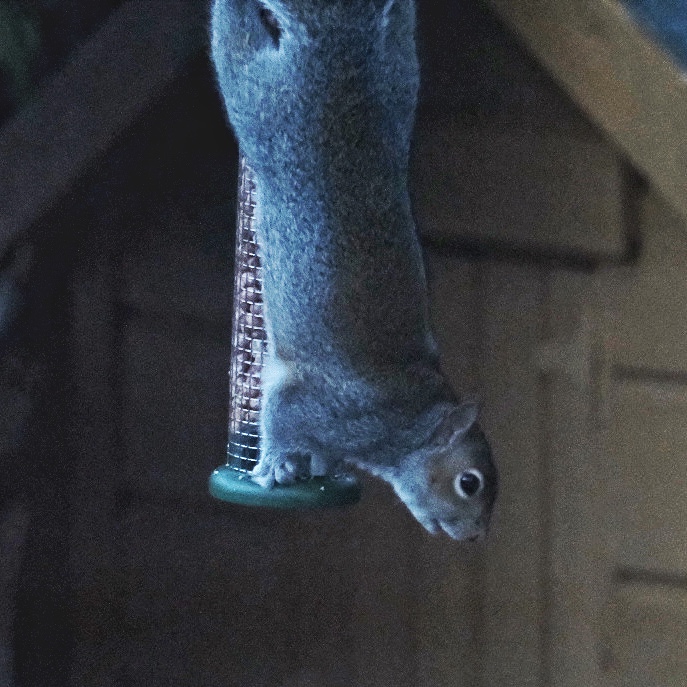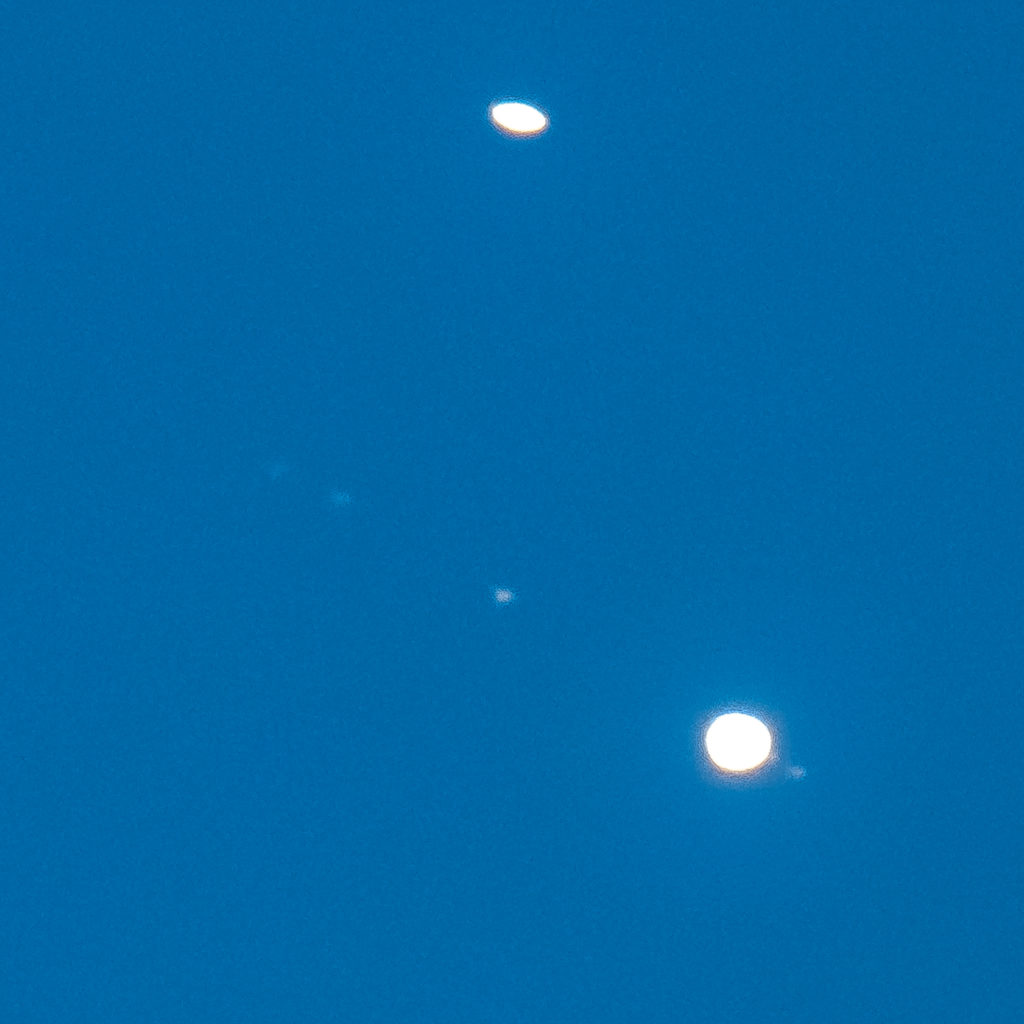Last evening, I walked the dog the very short distance to the Obelisk on Killiney Hill. It was close to 4.30 when we set out, the sun having set thirty minutes earlier, and I hoped to see the conjunction of Saturn and Jupiter in the western skies.

Siskin (LV=-4.88) 
Squirrel (LV=-0.45)
Note the low LV luminance values (full sun is 16 on this version of the log scale).
When Gus and I got to the top of the hill last evening, Saturn and Jupiter were shining bright, so bright that an iPhone rendered them quite well. Rendered isn’t resolved and I was lucky that a couple had brought a telescope. They invited me to peer at the moons of Jupiter and the rings of Saturn, they were that excited to share the two moons they’d seen. I was lucky that as the light continued to fade I could point out a third and a hint of a fourth emerging.
However, the cloud and mist soon rose to meet and occlude the setting conjunction of planets. But that was yesterday and the weather today wasn’t quite as good.
Earlier Today
We’d had a lot of fun watching garden birds on two new feeders that have animated (or is that birdated) our back garden. The back garden is about the area of a tennis court and the front a tad smaller. Where the back garden is flat, hedged and flagged, the front is a steep slope on which we built a rockery that is allowed to grow wild. We built and planted a lot of diversity in a small area. And our neighbour has bird feeders too so squirrels know these addresses well.
We are short of light in this garden, on the wrong side of the hill, the northern slope is little lit for four months of the year. And we are half way through those four months. Nonetheless, as can be read in many posts on this series of journals, we have much to see when have the time to look.
Later
So I returned to sky viewing tonight with 1600 mm of focal length on a Fuji X-T3. I knew that the 1 degree view of planets focussed at infinity would move across the sensor too quickly to resolve much at all. The MTO lens is f/10 and I’d need to snap the shutter at no longer than a second, so ISO would be high. Yet I hoped to see and capture Callisto, Ganymede, Io and Europa as they orbited Jupiter.

It was windy, misty and I’ll fail better next time.
(1 second exposure, ISO 4000, f/10, 1600 mm: LV=-10.45)
Light values or luminance values or the concepts of luminance versus illuminance are tricky subjects at the best of times but fortunately, the maths for computing exposure is encoded within all of our modern, self-adjusting cameras. The commonly used EV (exposure value) uses shutter and aperture alone whereas the LV takes into account the sensitivity of the medium, whether film or a digital sensor. And there are units for luminance which is the Candela per square meter. A candle burns at one Candela on your garden table, it’s luminance depends on the view angle and distance of the viewer. The sun burns at so many Candelas, so very far away, that a better way to think of it is by relative to what you see from the garden table. That’s about a billion times the power of the candle.
And with care and attention, your camera can photograph either. That’s technology for you.

Leave a Reply